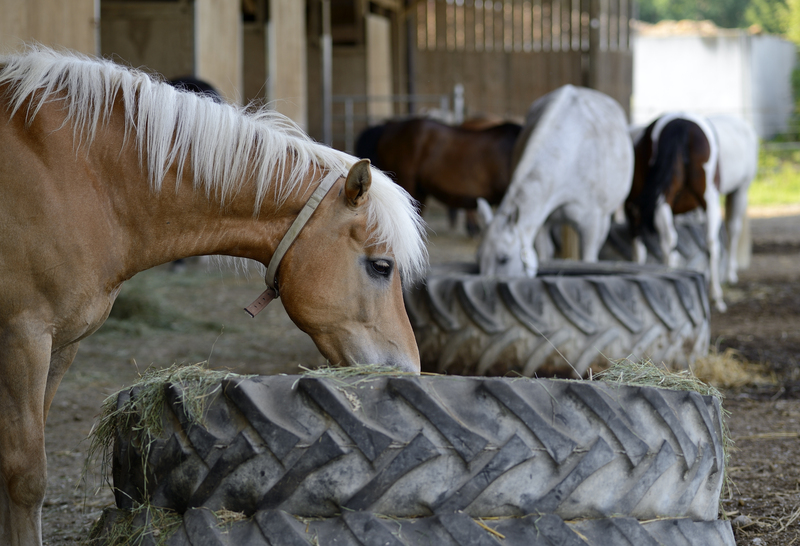Rescue the Rubbish: Unleash Your Creativity with Upcycling
In today's world, environmental sustainability and conscious consumerism matter more than ever. Every day, countless tons of waste end up in landfills. But what if you could turn that so-called "rubbish" into something valuable, beautiful, and useful? Welcome to the world of upcycling--an imaginative, eco-friendly practice that transforms waste materials or unwanted items into new products of better quality, function, or artistic value. Join us as we explore how to rescue the rubbish and unlock your creative potential with the magic of upcycling.
What is Upcycling? Understanding the Concept
Upcycling is more than just a buzzword--it's a creative movement sweeping homes, businesses, and communities worldwide. While recycling breaks down materials to create something new, upcycling reimagines waste items without degrading their quality, giving them a second life in often ingenious ways.
The Difference Between Upcycling and Recycling
- Recycling: Involves breaking down waste (plastic, glass, paper) into raw materials for manufacturing new products. This process can sometimes reduce the material's quality.
- Upcycling: Involves taking a discarded item or material and transforming it--sometimes with little or no processing--into something with greater value or purpose.

Why 'Rescue the Rubbish'? The Benefits of Upcycling
- Environmental Impact: Upcycling reduces landfill waste and conserves resources by giving new life to items that would otherwise be discarded.
- Economic Savings: By repurposing what you already have or salvaging items, you minimize the need to buy new, saving money.
- Unique Creations: Every upcycled piece is one-of-a-kind, reflecting your creativity and personality.
- Community Building: Upcycling projects foster collaboration, knowledge sharing, and support local artisans and small businesses.
- Educational Value: Upcycling teaches valuable skills, from carpentry and sewing to problem-solving and environmental stewardship.
Unleashing Your Creativity: Top Upcycling Ideas
Ready to rescue the rubbish and transform it into something extraordinary? Here are some inspiring upcycling projects using everyday items:
1. Furniture Revival: From Trash to Treasure
- Pallet Sofas and Coffee Tables: Reclaim old wooden pallets and turn them into rustic, affordable furniture for your home or garden.
- Chairs with a Twist: Give worn-out chairs a new lease of life with a coat of vibrant paint, some fresh fabric, or quirky embellishments.
- Shelf Life: Use ladders, crates, or even vintage suitcases as shelves or unique storage solutions.
2. Upcycled Home Decor
- Jars and Bottles: Convert glass jars and bottles into chic vases, mood lighting, or kitchen organizers.
- Mirror Frames: Repurpose old window frames or broken furniture pieces to create eye-catching mirror surrounds.
- Wall Art: Assemble discarded wood, fabric scraps, or metal remnants into creative wall art or collages.
3. Fashion and Accessories
- T-Shirt Tote Bags: No sew? No problem! Turn t-shirts into reusable bags with just a few cuts and knots.
- Jeans to Shorts: Transform worn jeans into trendy shorts or bags. Add patches or paints for a personalized touch.
- Jewelry from Junk: Upcycle keyboard keys, watch parts, or bottle caps into bold necklaces or earrings.
4. Garden and Outdoor Ideas
- Tyre Planters: Paint and stack old tyres to create colorful planters for flowers or veggies.
- Plastic Bottle Drip Irrigation: Use empty plastic bottles as simple, effective watering systems for your garden.
- Birdhouses from Scrap: Wooden scraps or tin cans can become cozy birdhouses or feeders.
5. Creative Kids' Projects
- DIY Toys: Cardboard boxes, lids, and fabric scraps make wonderful toys, forts, or arts and crafts projects.
- Puppet Show: Use socks, paper bags, and leftover buttons to create a cast of unique puppet characters.
- Educational Tools: Build puzzles or learning games using reclaimed materials--for fun that's eco-friendly and brain-boosting!
How to Start Your Upcycling Adventure
Ready to get creative and turn trash into treasure? Here's a step-by-step guide to launching your upcycling journey:
1. Choose your materials
- Survey your home for potential "rubbish": old clothes, broken furniture, empty containers, glass jars, cardboard, and more.
- Check with friends and family--what might be clutter to them could be treasure to you.
- Visit thrift stores, flea markets, or community "junk" swaps.
2. Get Inspired
- Browse online platforms like Pinterest, Instagram, or dedicated upcycling blogs for project inspiration.
- Watch DIY videos or take a workshop to learn new techniques.
- Let your imagination run wild--think outside the box!
3. Gather Your Tools
- Basic upcycling requires minimal tools: scissors, glue, paint, sandpaper, and sewing kits are a good start.
- For advanced projects, you may need drills, screwdrivers, or woodworking tools--be safe and learn how to use them properly.
4. Revamp, Reimagine, Rejoice
- Get creative! Don't be afraid to make mistakes--every upcycled project is a learning experience.
- Share your creations with friends, family, or online upcycling communities.
- Celebrate your contribution to a cleaner planet and a more unique, personalized home.
Upcycling for a Sustainable Future
Rescuing the rubbish isn't just about cleaning up--it's about transforming the way we view waste. When you upcycle, you join a global movement working towards a circular economy--where nothing is wasted, and everything has value.
Did you know? Upcycling helps combat pollution, supports local economies, and reduces the demand for new resources, making it one of the most impactful ways regular people can make a difference.
Tips for an Eco-Friendly Upcycling Lifestyle
- Start Small: Try one project at a time. Success will build your confidence and inspire new ideas.
- Collaborate: Join local upcycling groups or forums for advice, inspiration, and resource sharing.
- Educate & Advocate: Share your upcycling experiences--motivate others to join the movement.
- Buy Upcycled: Support artisans and brands who upcycle or use reclaimed materials in their products.
- Think Circular: Consider the full lifecycle of everything you use--how can you extend its usefulness?
Creative Upcycling: Real-Life Success Stories
Let's meet some upcycling trailblazers who turned rubbish into remarkable achievements:
Turning Surfboards into Skateboards
A group of eco-conscious entrepreneurs in California started collecting discarded surfboards from beaches and landfills. With artistic flair and expert craftsmanship, they transformed these boards into beautifully designed skateboards, selling them online and raising awareness about ocean pollution.
From Bottles to Buildings: The Bottle School Project
In Guatemala, a nonprofit called Hug It Forward built entire schools using plastic bottles filled with non-recyclable waste. Inspired volunteers turned the bottles into building bricks, helping local communities create safe, sustainable learning environments while cleaning up their landscapes.
Dress to Impress: Runway-ready Fashion from Discards
World-renowned designers have embraced upcycled fashion, sending garments made from fabric remnants, plastic, or electronic waste down high-profile runways. They prove that sustainability and style can go hand-in-hand--and inspire fashionistas everywhere to think differently about "throwaway" trends.
Frequently Asked Questions (FAQ) About Upcycling and Rescuing Rubbish
- Q: What's the easiest way to start upcycling at home?
A: Gather unused items--old clothes, jars, or boxes. Look up beginner upcycling projects online and start small, like a jar vase or t-shirt tote bag. - Q: Is upcycling expensive or time-consuming?
A: Not at all. Most projects require minimal investment and can be fun weekend activities for individuals and families. - Q: Can I earn money from upcycling?
A: Absolutely! Many people sell their upcycled creations at fairs, online marketplaces, or to local boutiques. - Q: Is upcycling good for the environment?
A: Yes! By keeping items out of landfills and reducing demand for new materials, upcycling plays a key role in sustainability.

Upcycling and Education: Teaching the Next Generation
Educating children about rescuing the rubbish through upcycling teaches creativity, resourcefulness, and environmental responsibility. School projects, workshops, and family activities foster a "make, don't waste" mentality that lasts a lifetime.
- Host family upcycling contests for creative home or garden projects.
- Incorporate upcycling in art classes or community service projects.
- Visit upcycling art installations and businesses to see real-world applications.
Final Thoughts: The Art and Heart of Upcycling
Whether you call it upcycling, creative reuse, or rescuing the rubbish, this innovative approach is reshaping our world--one project at a time. It's not just about saving money or reducing waste; it's about finding beauty, value, and purpose in the overlooked.
Unleash your creativity, rethink what you throw away, and join the global revolution to rescue rubbish and transform it into something remarkable. Your imagination is the only limit!
Ready to Rescue the Rubbish? Start Upcycling Today!
- Challenge: Select one "rubbish" item from your home and brainstorm three ways to give it new life. Share your creation online with #RescueTheRubbish and inspire others!
- Explore: Visit local upcycling workshops, sustainability markets, or online communities for tips and support.
- Remember: Every little project, no matter how small, makes a difference. Rescue the rubbish--and rescue our planet!
